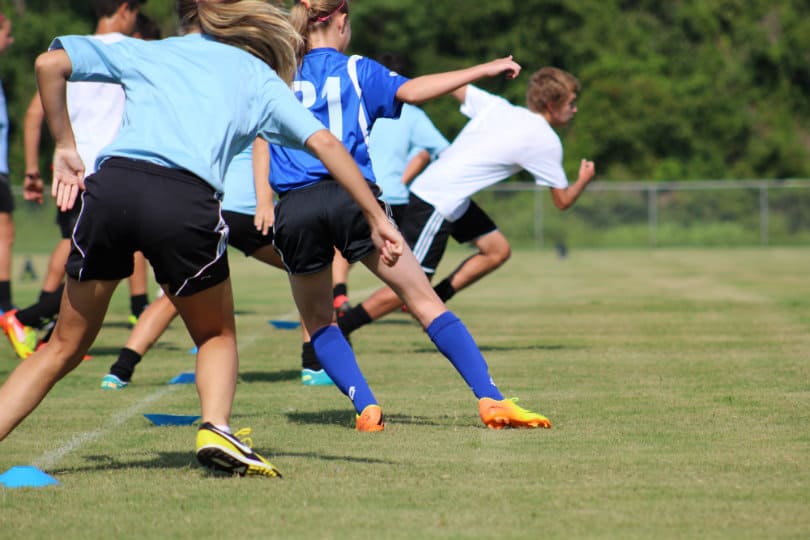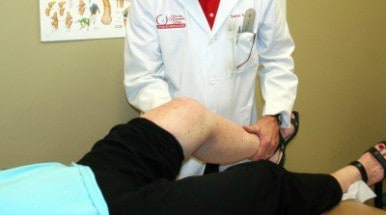What Is a Hamstring Injury?
- What is the Hamstring?
- What Causes Hamstring Injury?
- How are Hamstring Injuries Treated?
- What Is Recovery Life After Hamstring Repair Surgery?
A hamstring injury or strain can manifest as a pull, a partial tear, or a complete tear, graded from one to three in severity. Grade 1 strains typically are benign in nature and heal rapidly while grade 3 strains represent a complete tearing of the hamstring that requires extended healing time and may involve the tendon tearing completely off the bone, known as an avulsion injury.
“A lot of my patients want to know about hamstring injuries,” says Bryan L. Reuss, M.D., a double board-certified orthopaedic surgeon specializing in sports medicine at Orlando Orthopaedic Center. “Hamstring injuries are one of the most common things that we encounter. I’ve certainly had my own if I don’t stretch out properly prior to running down to first base playing softball.”
“The really crucial hamstring injuries are the ones where the hamstring tendon tears off the ischial tuberosity or the ‘sitting’ bones,” he says. “When that happens, it needs to be treated right away, or else a patient risks losing explosive running power for the rest of their lives.”
What is the Hamstring?
The hamstring is made up of three muscles that stretch the length of the back of the thigh. They originate at the bottom of the pelvis at the sit bone or ischial tuberosity, and run down the back of the leg across the back of the knee and insert into the lower leg.
Pulled hamstrings are a common occurrence with highly explosive athletes who engage in sports that require sprinting such as track and field, football, baseball, basketball and soccer.
What Causes Hamstring Injury?

Hamstring Injury
Overloading of the muscles is the primary cause of a pulled hamstring. The overload occurs when the muscle is overstretched or forced to bear a sudden weight load, causing it to lengthen and contract at the same time, a phenomenon known as eccentric contraction.
When sprinting, the athlete’s hamstring muscles are extended and loaded with the body’s weight at the same time, as the back leg pushes off to propel the runner forward.
Certain factors can increase the likelihood of injuring the hamstring:
- A tight muscle is more susceptible to injury: stretching before and after exercise is always recommended
- An imbalanced muscle: often the muscles in the front of the legs (the quadriceps) are stronger than the hamstrings, causing the hamstring muscles to tire faster during high-impact running and leading to strain
- Poor conditioning: as weak muscles are more likely to buckle under stress
- Fatigue: a tired muscle is more prone to strain and injury
How are Hamstring Injuries Treated?

Hamstring Injury Treatment
Hamstring injuries can be addressed by both conservative and surgical methods, depending on the degree of the strain or tear, and based on one’s needs and lifestyle.
Rest, ice, compression, and elevation have been used effectively to recover from more mild hamstring strains, along with wearing a knee brace and beginning a physical therapy program.
“It’s important to consult an orthopaedic sports medicine specialist to determine what type of hamstring injury you have and if it needs surgery,” says Dr. Reuss.
Surgery is typically indicated for hamstring avulsion injuries, where the tendon has detached from the bone. During the procedure, a surgeon will reposition the tendon and clear away any scar tissue. The tendon will then be reconnected to the ischial tuberosity bone with the help of suture anchors.
What Is Recovery Life After Hamstring Repair Surgery?
According to Dr. Reuss, although the recovery process can extend over several months, most patients can eventually resume their regular activities.
“Surgery typically is an outpatient surgery that requires bracing for about three weeks and crutches for about two to three weeks,” he says. “It also involves a lengthy recovery of about three to four months, but generally, patients can get back to their normal activities at the four to six-month range.”
Medical studies have shown that avulsion surgery reliably improves hamstring pain and function with excellent patient satisfaction. Rehabilitation and physical therapy after surgery are a vital phase in the recovery process. Physical therapy starts with gentle stretches to promote flexibility and mobility followed by a strengthening regime when the patient is physically ready.


